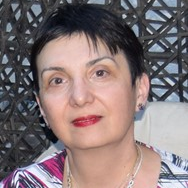Digitalization in Dentistry and Oral and Maxillofacial Surgery. A Step Forward
A special issue of Applied Sciences (ISSN 2076-3417). This special issue belongs to the section "Applied Dentistry and Oral Sciences".
Deadline for manuscript submissions: closed (30 April 2023) | Viewed by 10025
Special Issue Editors
Interests: nanomaterials; oral and maxillofacial surgery; CAD/CAM; 3D printing; implant dentistry; biomaterials
Special Issues, Collections and Topics in MDPI journals
Interests: Implant dentistry; aesthetic dentistry; bone regeneration; periodontics and oral pathology
Special Issue Information
Dear Colleagues,
Digital technologies have rapidly gained popularity and become a part of everyday practice in the dental profession.
Defined as any dental technology or device incorporating digital or computer-controlled components, digital dentistry provides quantifiable benefits in terms of quality, time savings, and labor cost reductions.
Digital workflows are applicable not only in prosthodontics, but also in oral and maxillofacial surgery, orthodontics and, generally, in all fields of dental care. The use of digital imaging could also contribute to accurate oral diseases diagnosis and improve healthcare service provisions.
The creation of the digital or virtual dental patient, through the use of specific software and application of sophisticated dental imaging techniques (such as 3D cone beam computed tomography, facial scanning, intraoral scanning) could be used for precise pre-operative clinical assessment, simulation of treatment planning in dental practice, and a better compliance of the patient.
Digital management programs are extensively used nowadays in collecting, storing, and sharing patients' medical files with care providers in real time, ensuring a comprehensive multidisciplinary treatment.
The significant reduction of laboratory production and in office treatment time allowed freeing up time for better dentist–patient communication. The virtual planning and communication led to the involvement of patients in their treatment journey.
All the above-mentioned benefits for dentists, technicians and – most importantly – for patients have also some limits that need to be identified and addressed.
We invite authors to submit original research articles and reviews to this exciting topic related to the use of digital technology in dental, oral, and maxillofacial fields.
Dr. Corina Marilena Cristache
Prof. Dr. Alessandro Lanza
Guest Editors
Manuscript Submission Information
Manuscripts should be submitted online at www.mdpi.com by registering and logging in to this website. Once you are registered, click here to go to the submission form. Manuscripts can be submitted until the deadline. All submissions that pass pre-check are peer-reviewed. Accepted papers will be published continuously in the journal (as soon as accepted) and will be listed together on the special issue website. Research articles, review articles as well as short communications are invited. For planned papers, a title and short abstract (about 100 words) can be sent to the Editorial Office for announcement on this website.
Submitted manuscripts should not have been published previously, nor be under consideration for publication elsewhere (except conference proceedings papers). All manuscripts are thoroughly refereed through a single-blind peer-review process. A guide for authors and other relevant information for submission of manuscripts is available on the Instructions for Authors page. Applied Sciences is an international peer-reviewed open access semimonthly journal published by MDPI.
Please visit the Instructions for Authors page before submitting a manuscript. The Article Processing Charge (APC) for publication in this open access journal is 2400 CHF (Swiss Francs). Submitted papers should be well formatted and use good English. Authors may use MDPI's English editing service prior to publication or during author revisions.
Keywords
- CAD/CAM technology
- additive manufacturing
- subtractive manufacturing
- digital imaging
- intraoral/extraoral scanning
- facial scanting
- digital condylography
- virtual articulator
- digital orthodontics
- Virtual Reality (VR)
- Augmented Reality (AR)
- virtual patient
- teledentistry






